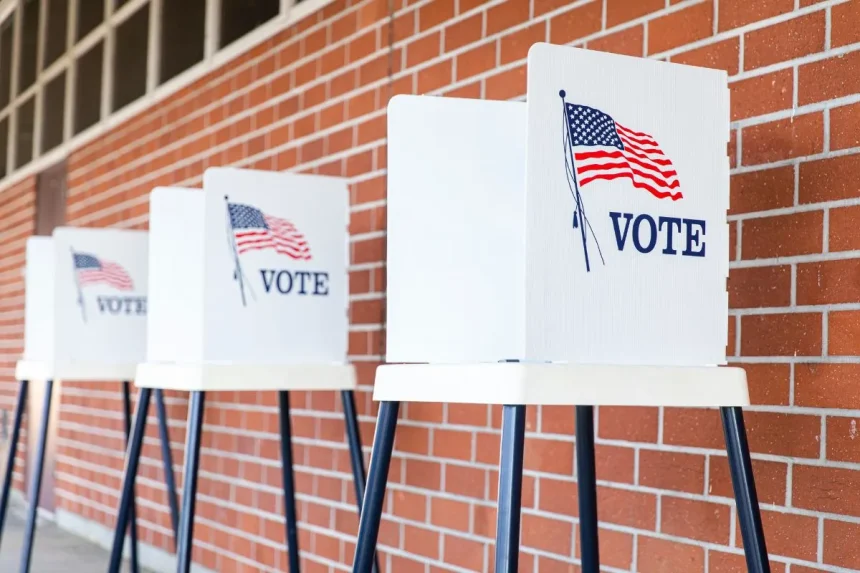The 2024 United States presidential election is poised to be a significant event in American politics, with ballot access playing a critical role in determining the viability of candidates. Ballot access laws, which vary widely across states, dictate how candidates and political parties can secure a place on 2024 United States Presidential Election ballots. These laws impact every aspect of the electoral process, from primary elections to the general election, and are particularly crucial for independent candidates and minor parties seeking to challenge the dominance of the two major parties.
Importance of Ballot Access in 2024 United States Presidential Election
Ballot access is the gateway through which candidates can reach voters. Without access to the ballot, even the most compelling candidates cannot compete in the election. The 2024 United States presidential election highlights the complexities and challenges associated with this process, as candidates must navigate a patchwork of state-specific regulations that can be both stringent and inconsistent.
Key Methods for Achieving Ballot Access
In the 2024 United States Presidential Election, candidates can pursue several routes to secure their names on ballots across the country:
Party Nomination:
- Major Parties: Candidates affiliated with major political parties, such as the Democratic and Republican parties, typically seek their party’s nomination through a series of primaries and caucuses. These 2024 United States Presidential Elections determine the number of delegates a candidate will have at the party’s national convention, where the official nominee is selected. The path to nomination is highly competitive, often requiring significant resources, widespread support, and a strategic campaign.
- Minor Parties: Candidates representing minor parties, such as the Libertarian or Green Party, also seek nominations through their party’s internal processes. However, these parties face additional challenges, such as limited media coverage and fewer resources, making it harder to compete with the major parties.
Independent Candidates:
- Signature Requirements: Independent candidates must meet state-specific signature requirements to qualify for the ballot. These requirements vary widely, with some states demanding tens of thousands of signatures from registered voters. For instance, California requires approximately 67,000 signatures, while Texas requires around 80,000, based on a percentage of votes from the previous gubernatorial election.
- Filing Deadlines: Each state sets its own deadlines for submitting the necessary signatures and paperwork. Missing these deadlines can disqualify a candidate from appearing on the ballot, making it essential for campaigns to stay organized and proactive.
- Nomination Papers: In addition to gathering signatures, independent candidates must file nomination papers that typically include their intent to run and the names of their electors. Some states also require candidates to pay a filing fee, which can range from a few hundred to several thousand dollars.
Write-in Candidates:
Some states allow candidates to run as write-ins, a method where voters physically write the candidate’s name on the ballot. However, write-in campaigns often face additional challenges, such as needing prior registration or meeting specific criteria to ensure that write-in votes are counted. These requirements vary by state and can be as complex as those for independent candidates seeking direct ballot access.
Current Status of Major Candidates
As of now, the major party candidates in the 2024 United States presidential election are shaping up as follows:
- Joe Biden (Democrat): The incumbent President, Joe Biden, is the presumptive nominee for the Democratic Party, with the party’s national convention scheduled for July 2024.
- Donald Trump (Republican): Former President Donald Trump is the leading candidate for the Republican nomination, with their convention slated for August 2024.
- Robert F. Kennedy Jr. (Independent): Kennedy, originally a Democratic contender, has shifted to an independent run, facing the challenge of securing ballot access without the backing of a major party.
- Marianne Williamson (Democrat): Williamson continues her campaign within the Democratic Party, though she remains a long-shot candidate compared to Biden.
The Challenges of Ballot Access in 2024 United States Presidential Election
The process of gaining ballot access in the 2024 United States Presidential Election is fraught with challenges, especially for independent candidates and those from minor parties. These challenges are rooted in the diverse and often stringent requirements imposed by individual states:
State-Specific Requirements:
Each state has its own set of rules governing ballot access. These can include filing deadlines, petition signature thresholds, and other criteria that candidates must meet to appear on the ballot. For example, minor parties may need to demonstrate a certain level of support from previous elections to gain automatic ballot access, while independent candidates must often gather a significant number of signatures within a limited timeframe.
Recent Legislative Changes:
Some states have recently tightened their ballot access laws, making it even more challenging for candidates outside the major parties to qualify. New York, for instance, has raised the thresholds for both signature requirements and the percentage of votes needed by a party in the previous election to maintain ballot access. These changes can significantly impact the strategies of minor parties and independent candidates, forcing them to invest more resources in signature-gathering efforts and legal challenges.
Ballot Access for Minor Parties
Minor parties, which typically lack the resources and established voter base of the major parties, face additional hurdles in gaining ballot access:
Signature Thresholds:
In many states, minor parties must collect a substantial number of signatures to qualify for the ballot. These thresholds are often set higher than those for major party candidates, reflecting an institutional bias that favors the two-party system. For instance, in California, a minor party candidate might need to gather over 67,000 signatures, a daunting task without the support infrastructure available to major party candidates.
Limited Automatic Access:
Unlike major parties, which often enjoy automatic ballot access based on previous electoral performance, minor parties usually must re-qualify for each election cycle. This means that even if a minor party achieved ballot access in a previous election, it might still need to meet new signature requirements or other criteria to appear on the ballot in 2024.
Financial Constraints:
Minor parties often operate with limited financial resources, making it difficult to fund large-scale petition drives, legal challenges, or promotional efforts. The high cost of complying with ballot access requirements can divert resources away from campaigning and voter outreach, further disadvantaging these parties.
Institutional Barriers:
The political landscape in the United States is dominated by the two major parties, leading to institutional biases that make it harder for minor parties to compete. Ballot access laws are often written in ways that protect the interests of the major parties, such as by requiring minor parties to meet higher thresholds for signatures or votes in previous elections to qualify for ballot access.
Final Thoughts
The 2024 United States presidential election will be shaped by the complexities of ballot access laws, which vary widely across the country and impose significant challenges on candidates, especially those from minor parties or running as independents. As the 2024 United States Presidential Election approaches, candidates must navigate a legal and procedural landscape that can be both unpredictable and unforgiving. Success in gaining ballot access will require careful planning, substantial resources, and a deep understanding of state-specific requirements. For voters, understanding these challenges is key to appreciating the full spectrum of choices available in the upcoming election.
In this high-stakes political environment, ballot access is not just a procedural hurdle but a critical battleground that could determine the course of the 2024 United States Presidential Election.







